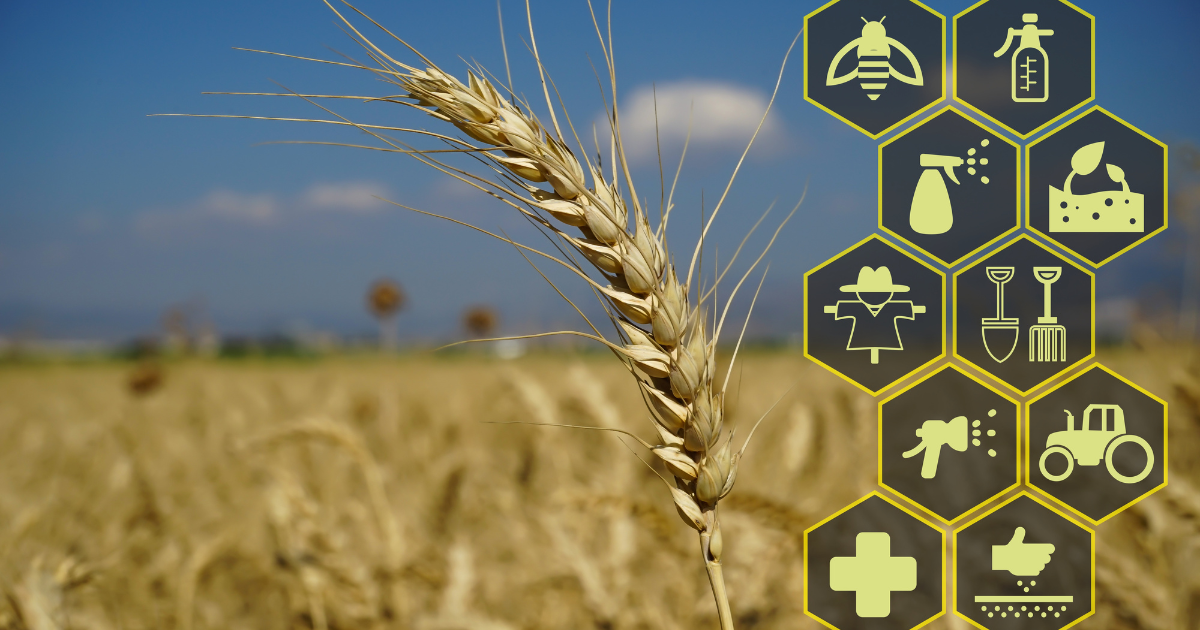
Ag Services and AI: How Smart Tech is Helping Businesses Scale Efficiently

On this Earth Day, the agricultural industry faces a dual challenge: feeding a growing global population while preserving the planet’s resources. Fortunately, artificial intelligence (AI) is stepping up to help ag businesses scale more efficiently and sustainably than ever before. From precision farming to supply chain optimization, AI-powered solutions are reducing waste, improving yields, and making ag services more resilient to environmental challenges.
One thing is clear: smart technology isn’t just a tool for scaling business—it’s a pathway to a more sustainable and adaptive future.
AI-Powered Efficiency in Ag Services
One of the greatest benefits of AI in ag services is its ability to streamline operations while minimizing environmental impact. Here’s how businesses are leveraging smart technology to scale.
1. Precision Agriculture Reduces Waste and Conserves Resources
AI-driven precision farming tools are enabling hyper-targeted application of inputs like fertilizers, pesticides, and water. These tools synthesize real-time data from soil sensors, GPS mapping, and satellite imagery to ensure that crops receive exactly what they need—no more, no less. This not only conserves valuable resources but also minimizes runoff, reduces input costs, and supports healthier soil over time.
In fact, farms utilizing precision technologies report significant gains in productivity and efficiency. GPS-guided machinery, variable rate application systems, and remote sensing technologies are becoming standard in modern agriculture, helping farmers manage large operations with pinpoint accuracy.
2. Smart Supply Chains Cut Carbon Footprints
Beyond the field, AI is transforming the agricultural supply chain. Predictive analytics and real-time tracking systems help businesses anticipate demand, optimize harvest timing, and streamline transportation logistics. By reducing spoilage, improving cold chain efficiency, and enabling just-in-time delivery, these technologies are lowering emissions and cutting down on food waste.
For example, combining AI with IoT sensors allows for real-time monitoring of perishable goods during transit. This helps prevent spoilage, reduces the need for excess storage, and improves product freshness—critical for both profit margins and sustainability.
3. AI and Regenerative Farming Practices
Regenerative agriculture—which emphasizes building soil health, increasing biodiversity, and capturing atmospheric carbon—is gaining momentum as a sustainable farming model. AI is playing a pivotal role by helping farmers understand and respond to the complex variables involved in soil regeneration.
Tools that analyze microbial activity, organic matter content, and moisture levels allow for more responsive and informed land management. These insights make it easier to adopt practices like cover cropping, reduced tillage, and composting, which enhance carbon sequestration and long-term soil fertility. In-soil sensors and drone-based imaging systems also allow farmers to track the outcomes of their regenerative efforts over time, turning gut instinct into measurable progress.
4. Climate Adaptation and Risk Management
The rise in extreme weather events has made climate resilience a top priority for ag businesses. AI-powered weather modeling, combined with historical climate data and geospatial mapping, enables farmers to forecast risks like drought, flooding, or pest outbreaks with greater accuracy.
Drone surveillance and machine vision systems are increasingly used to detect early signs of crop stress—often before they’re visible to the human eye. By flagging problems early, farmers can take corrective action and avoid larger losses. This proactive approach is especially valuable in high-risk environments, where even small delays can have major economic consequences.
Scaling Sustainably with AI
As agribusinesses grow, AI technologies offer a path to scale without sacrificing sustainability. Whether it's a large-scale operation using advanced robotics or a cooperative model where smallholders share access to smart tools and data, AI helps optimize every stage of the agricultural process.
With these technologies in place, agriculture is becoming more precise, more predictable, and more sustainable, making it possible to meet the demands of a growing population while protecting the resources that future generations will depend on.
AI’s impact on agriculture is undeniable—serving not just as a driver of growth, but as a catalyst for long-term sustainability and adaptability.
Happy Earth Day!
At Gate 39, we have more than 20 years of experience creating customized ag tech solutions. Contact us to see how we can help your agribusiness grow.
You might also be interested in:
- The Evolution of UX Design in Agricultural Applications
- Harvesting Success: How Collaboration Fuels Agtech Advancements
- 3 Key Considerations Anthem Ag Uses When Building an Ag Mobile App
Editor’s Picks
Last week, we hit a major milestone: our first in-person, company-wide event in five years—Gate 39 Backstage. For our hybrid-remote team, this...


Connect with us to discover how we can help your business grow.
.jpg)
